Lecture 1
1/38
There's no tags or description
Looks like no tags are added yet.
Name | Mastery | Learn | Test | Matching | Spaced |
|---|
No study sessions yet.
39 Terms
When was Epigenetics first proposed?
first proposed as a solution to the problem of genetics
Genetics:
the study of how, in all livings, the qualities of parents are given to their children through genes
study of heredity
What does genetics attempt to understand?
attempts to understand phenotype by studying genotype
What is a problem of genetics?
could not understand how the same genotype could produce different phenotypes
True or False: Concordance rates are not 100% for identical twins.
True
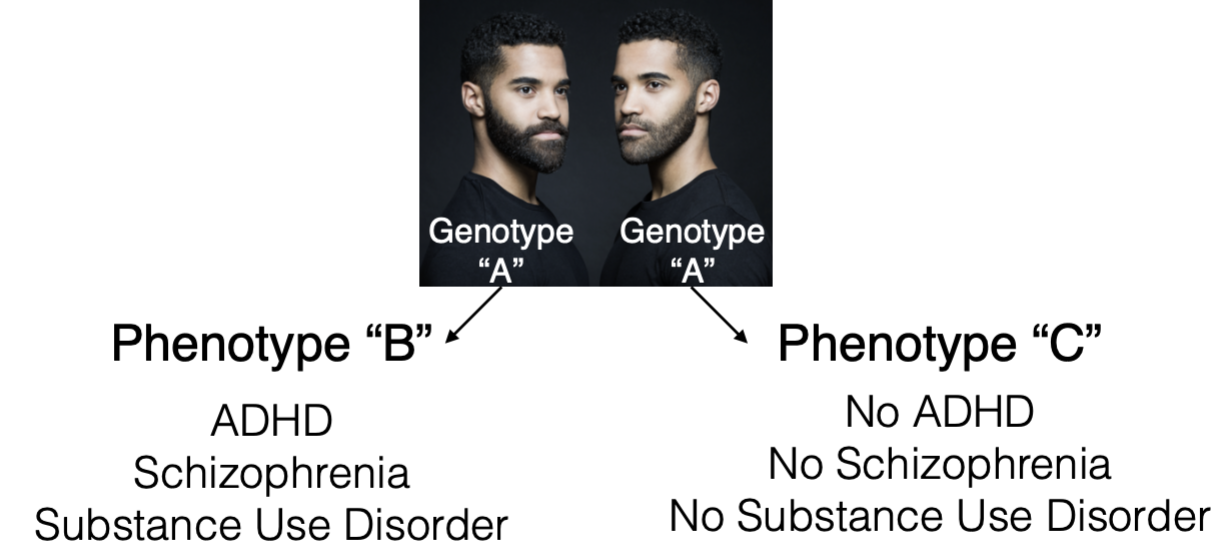
True or False: Our phenotypes are stable across development, and our genotype changes.
False, our phenotypes change across development but our genotypes do not
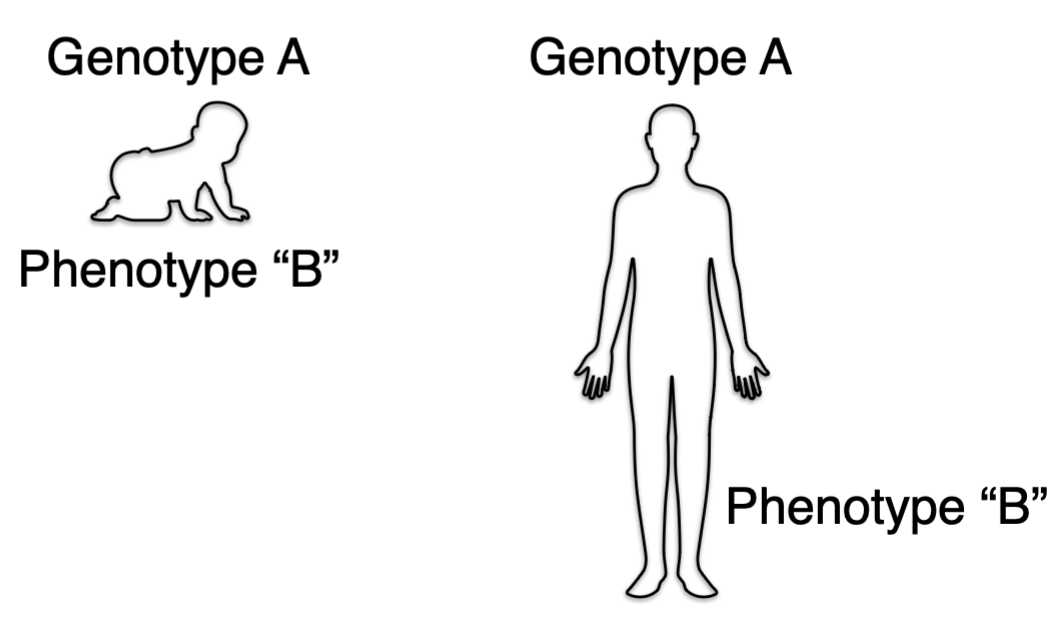
What would be an example of how genotype doesn’t fully explain phenotype?
our somatic cells have the same DNA but these cells look and act differently
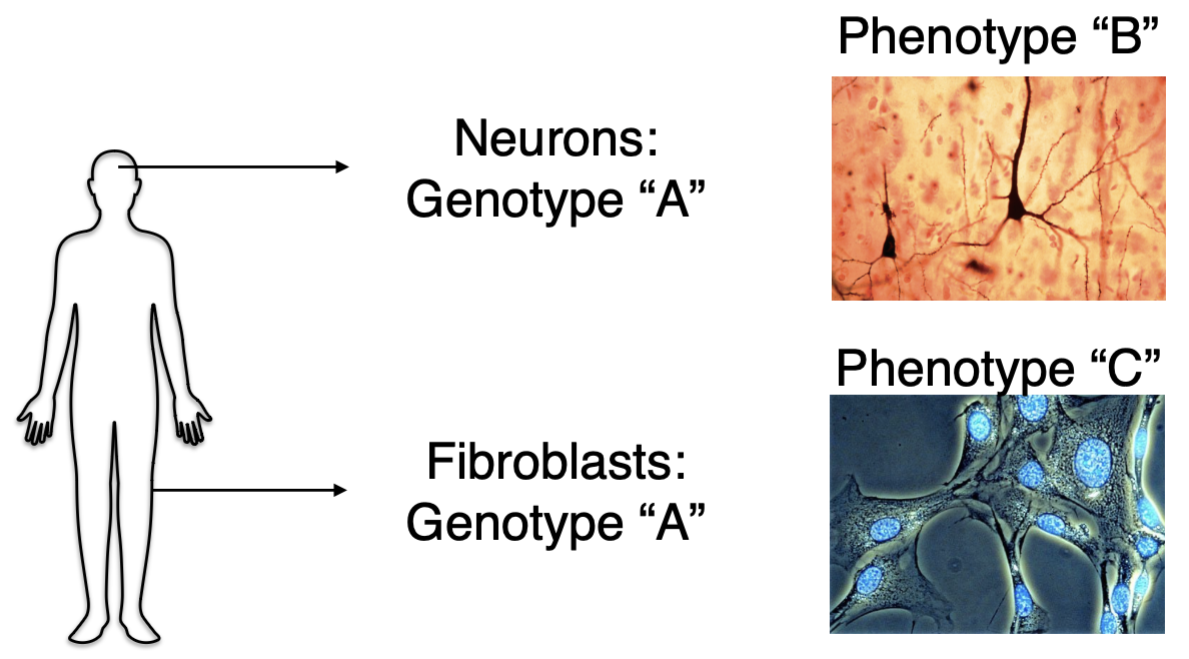
How did early geneticists hypothesize genotypes?
hypothesized about genotypes by observing phenotypes
Mendel → “heritable elements” were thought to be passed down to produce visible qualities
What were the molecular basis of Mendel’s heritable factors?
molecules need to be transmitted from parents to offspring
molecules need to be transmitted from fertilized egg to “daughter cells” during cell division
molecules need to be able to influence the structure and functioning of daughter cells, so that an organism can be built in a species-appropriate way
Difference between geneticists and embryologists:
geneticists → something in the nucleus
embryologists → something more than the nucleus
less focused on the nucleus/ genes
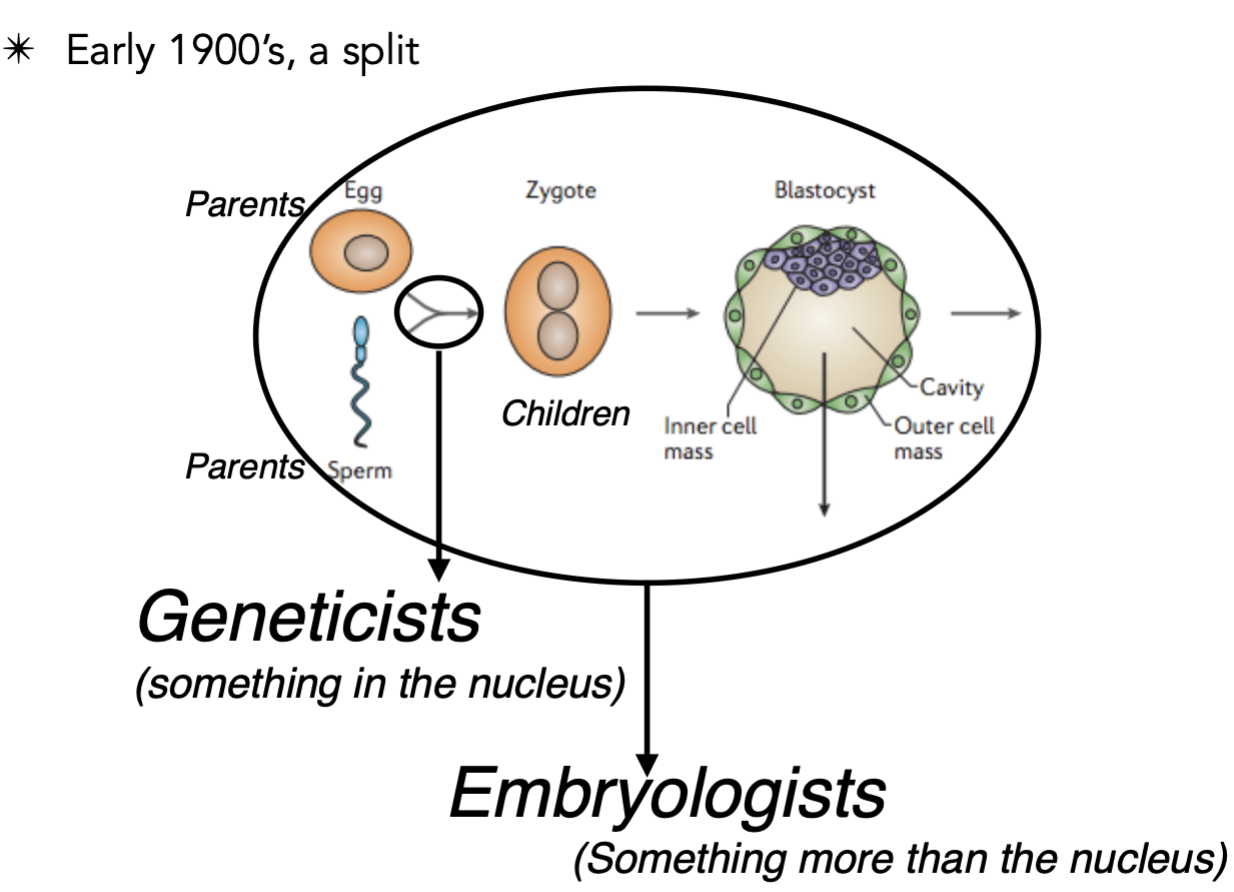
Ernest Everrett Just:
embryologist that asserted cells posses the ability to respond to complex, physiologically relevant signals acting at the cell surface
opposed idea that embryo was pre-determined
How can cells with the same genotype have distinct phenotypes?
zygotes divide by mitosis in a process where each cell doubles
early embryonic stem cells can become any type of cell
as development proceeds, cells become specified
distinct from each other in structure and function
same DNA
once they commit to a particular pathway, they don’t go back
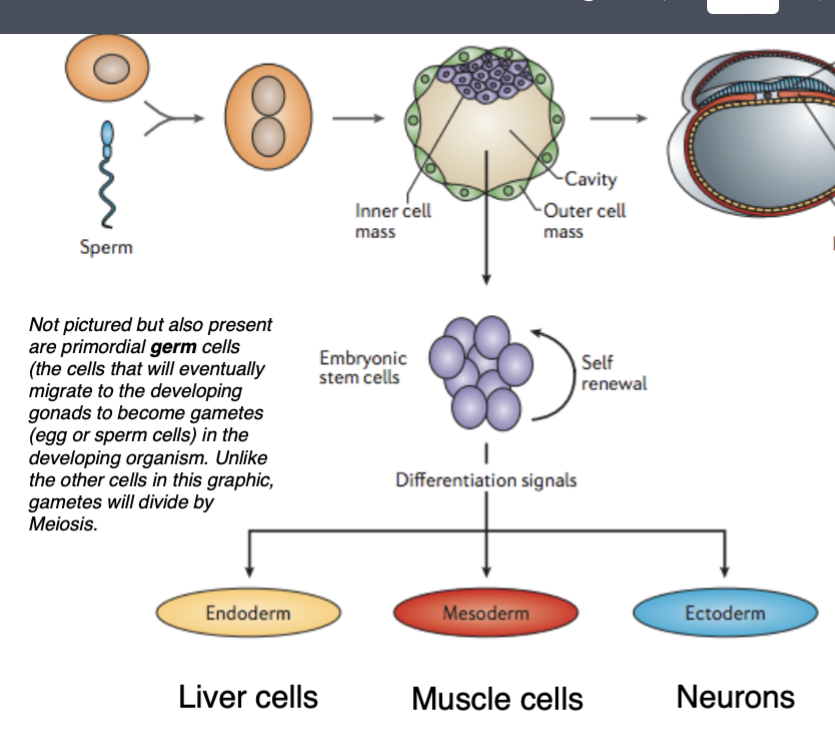
Genetic Restriction Theory:
theory emphasizes that nuclear and cytoplasmic factors interacted
explained how identical chromosomes could give rise to different cells
non-genetic cytoplasmic factors contributing to phenotype, neurons store unused DNA
supported by modern epigenetics data
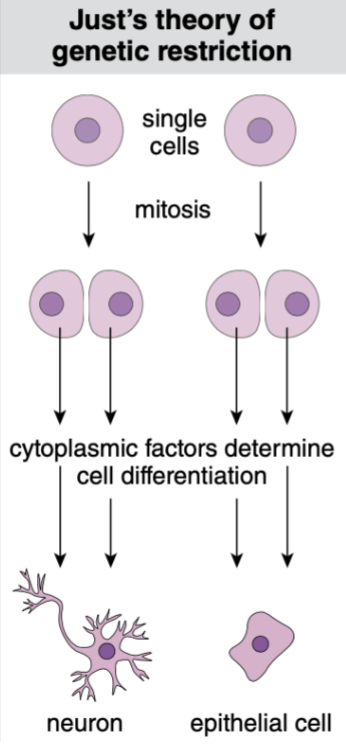
Morgan’s Gene Theory:
theory suggests that nuclear factors like genes determine cell phenotype
doesn’t explain how neurons and epithelial cells have the same genotype but different phenotypes
genes control all events throughout development
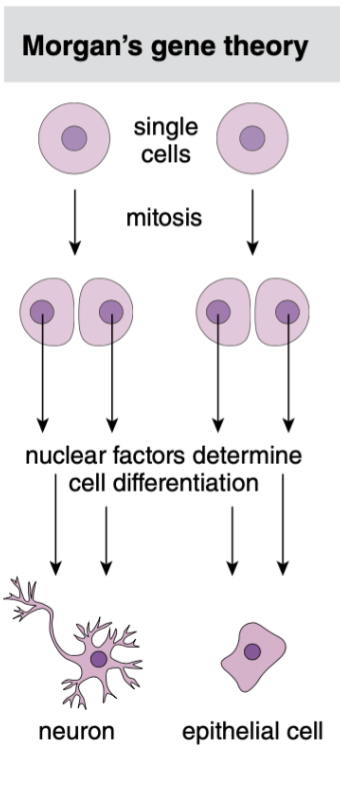
Why was Just’s theory of Gene Restriction correct?
developmental processes restrict the use of all genetic material and unused material is “sequestered” in the nucleus
nuclear and cytoplasmic factors do interact to affect phenotype
The Modern view of Epigenetics:
genotype alone does not determine phenotype
environmental factors act on genes to determine phenotype
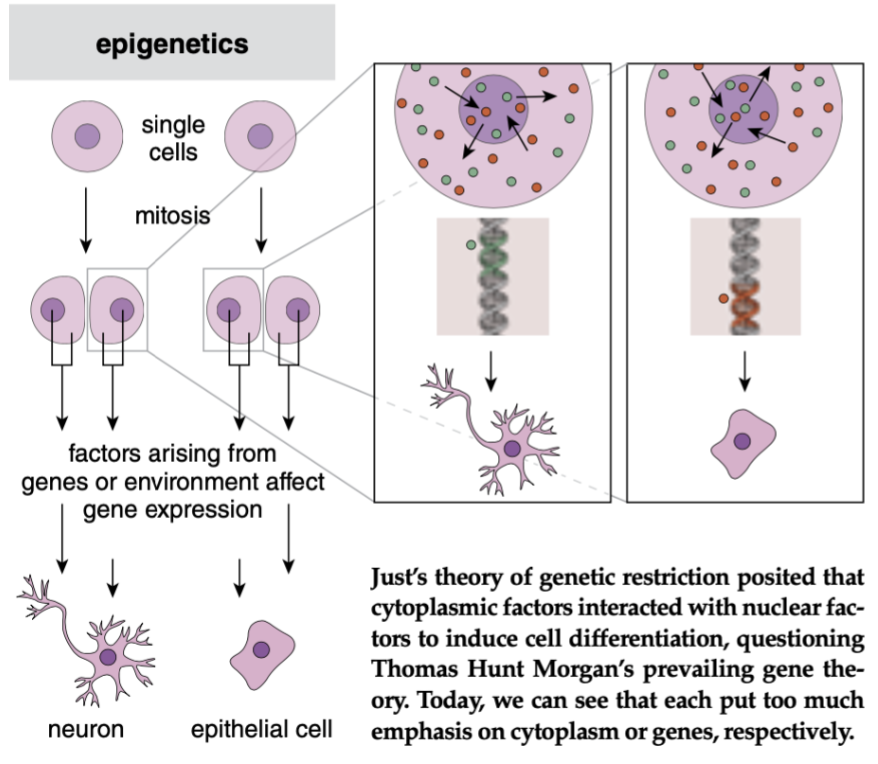
Epigenotype:
paper written by Conrad Waddington in which he called the attention to the lack of any known or hypothesized causal mechanisms that could translate genotype into phenotype
argued that there must be some level of regulation “over” the level of genes
Epigenetics:
stable alterations in gene expression without changes to the underlying DNA sequence
heritability dissociates epigenetics from neuroepigenetics
covalent modifications of DNA and histone proteins that exists “over” DNA and influence gene expression
regulatory mechanisms should persist in the absence of the original signal
Why can’t genotype explain phenotype?
genotype can’t explain phenotype because not all genes in a cell are used or expressed
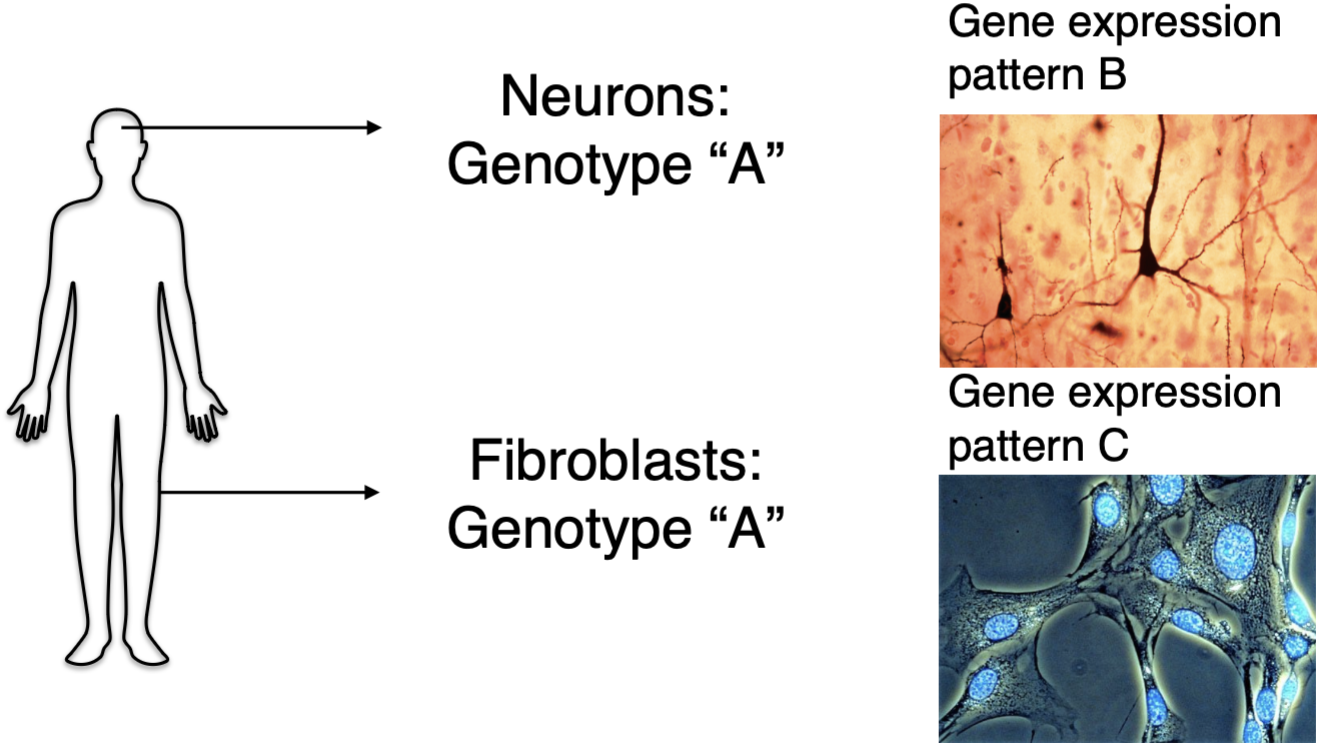
How does phenotype arise from genotype?
after cells differentiate they lose pluripotency → access to be whatever they want
don’t lose genetic material
transcription factors proteins regulate gene expression patterns
TFP regulated by intrinsic and extrinsic signals
True or False: Cells become different during development when cell-specific gene expression patterns are set by Transcription Factor Proteins.
True
Transcription factors:
proteins that determine which genes are active and when
bind to regulatory elements or specific DNA sequences to regulate transcription
How can cells become different during development when cell-specific gene expression patterns are set by Transcription Factor Proteins?
transcription factors can turn genes on/off by binding to specific DNA sequences to activate or repress them

Enhancers:
transcription factor binding sites that may be any distance from the gene
DNA looping can be initiated when a TF binds to enhancer element
TF at enhancers site can facilitate RNA pol. binding at the promoter
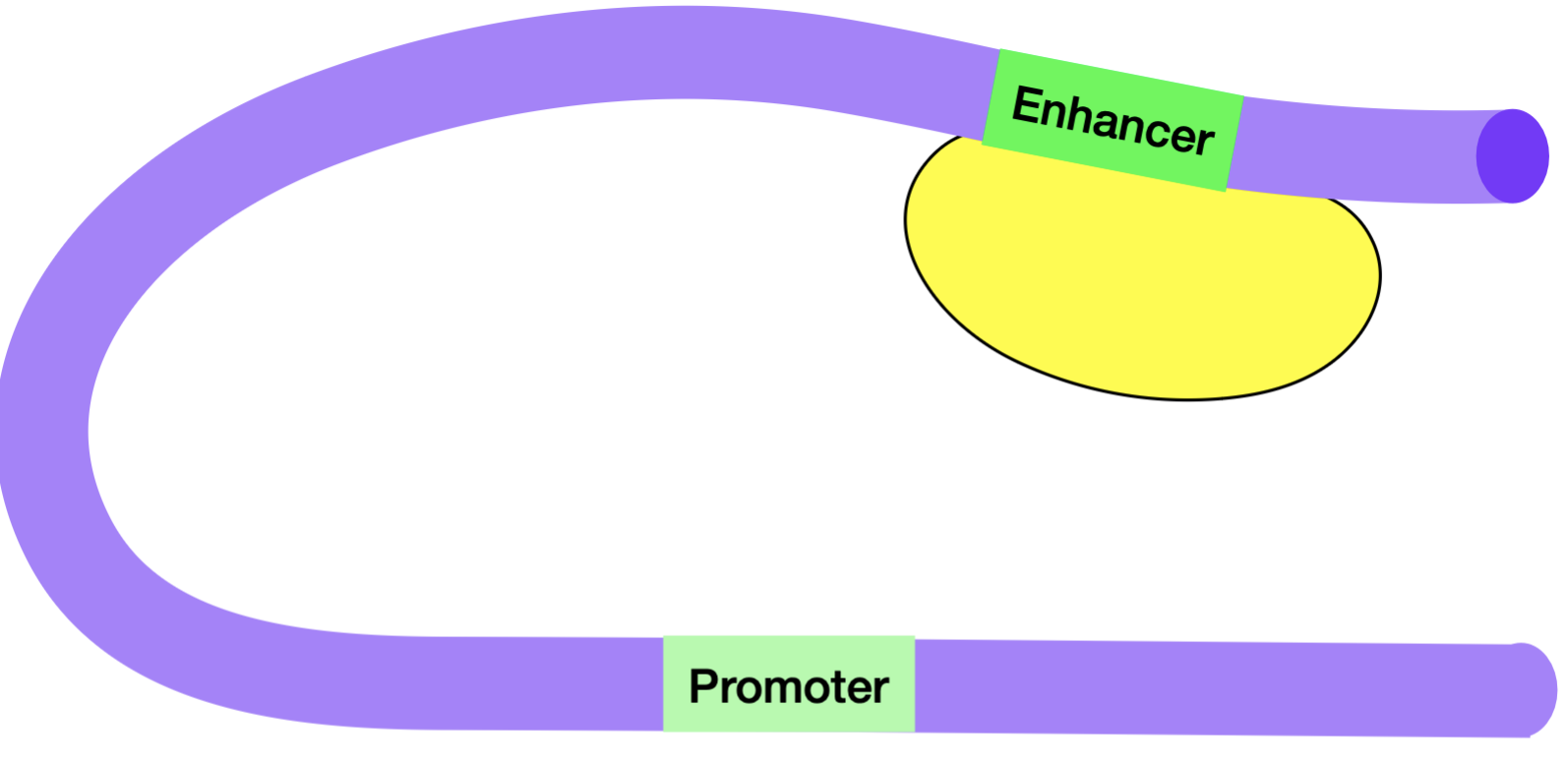
What causes the transcription factor to bind?
TF must be turned “on” in order to bind to DNA
are activated by intrinsic and extrinsic signals
Intrinsic signals:
arise from inside the cell
presence or absence of proteins, enzymes, etc
Extrinsic signals:
arise from outside the cell → other cells or outside environments
signaling molecules
hormones
neurotransmitters
etc
Which transcription factor initiates development?
the transcription factors that initiate development are contributed by the mother
present in the fertilized egg

How does gene expression regulate cell differentiation?
new patterns of expression arise in daughter cells when:
TF activate genes that encode other TF
signaling molecules can impact gene expression
steroid hormone receptors are ligand-dependent TF
neurotransmitter receptor stimulation can activate intracellular enzymes that regulate the activity of TF
True or False: The induction of gene expression by a developmental signal is Epigenetic.
False, The induction of gene expression by a developmental signal is NOT Epigenetic
True or False: The persistence of gene expression patterns in the absence of developmental signals is Epigenetic.
True

Covalent modifications:
each ball is a nucleosome with 2 copies of the 4 histones
about 147 BP of DNA

Types of Chromatin:
Heterochromatin → tightly wound and transcriptionally inactive
Euchromatin → loosely wound and transcriptionally active

Example: Gene X expression sustained in the absence of the developmental signal.
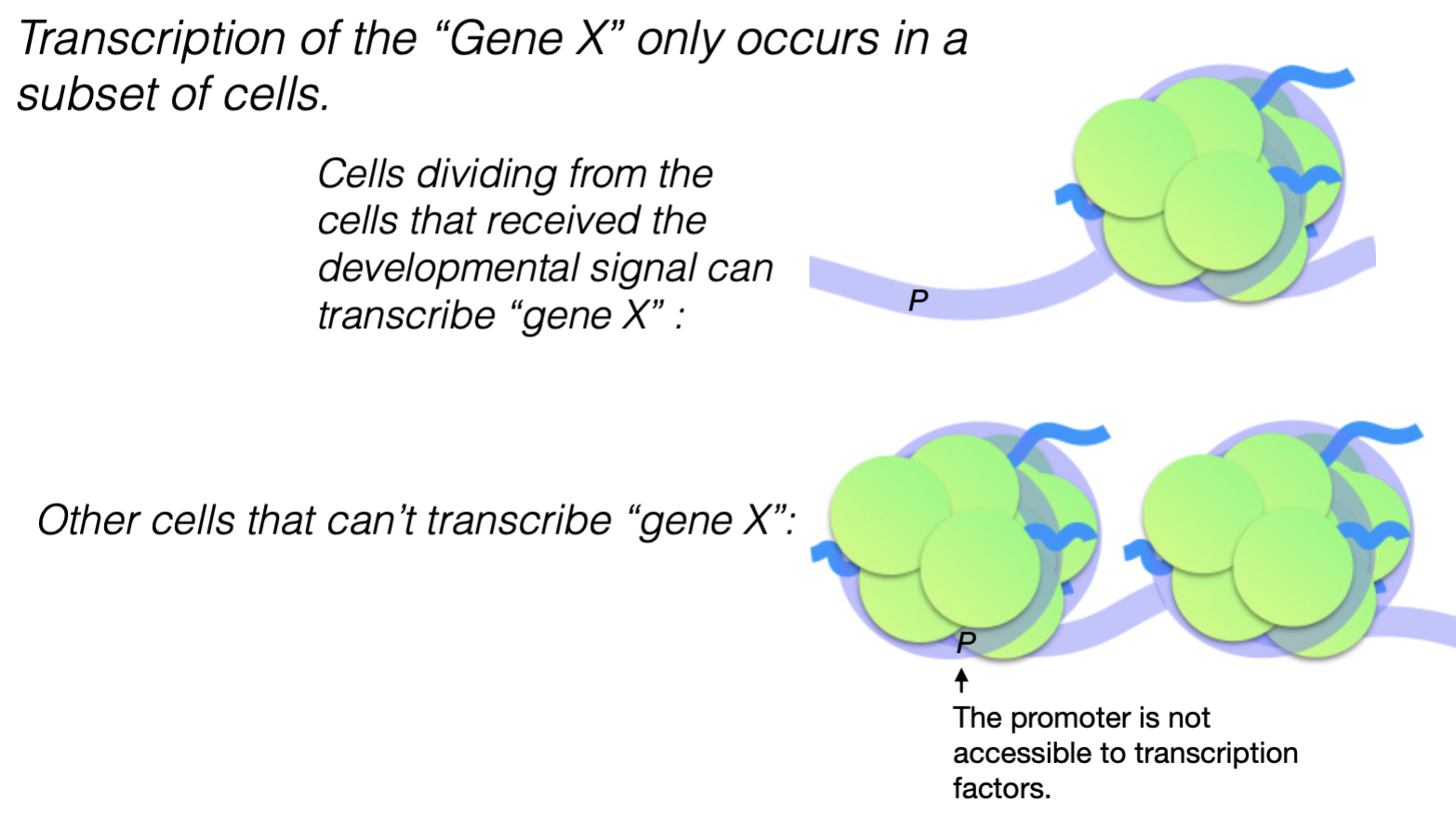
What does it mean by “Once a liver cell always a liver cell”?
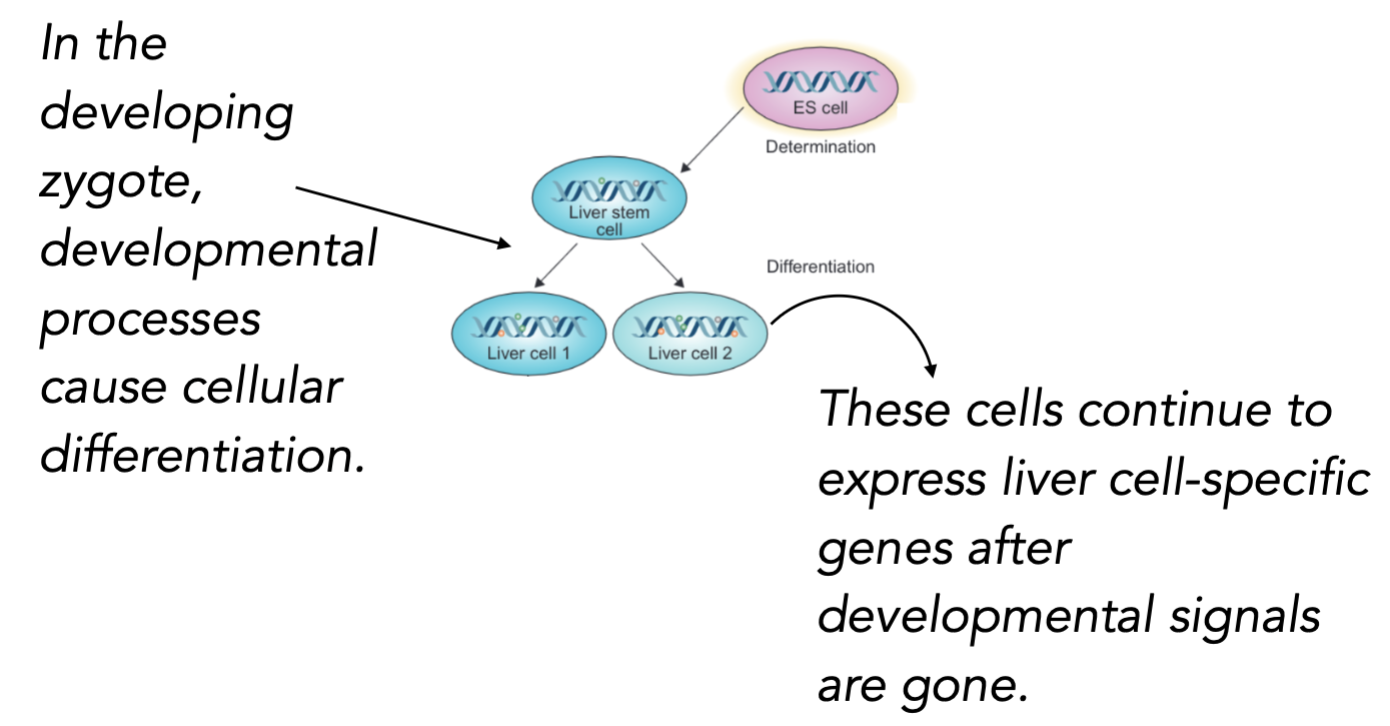
What happens when liver cells are generated in adulthood?
1 liver cell can divide into 2 liver cells
new liver cell looks and acts the same as the original liver cell even though it was never exposed to developmental signals
has the same DNA
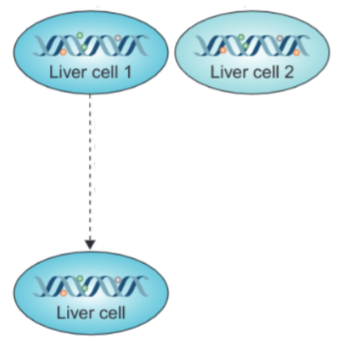
Why does the issue of heritability dissociate traditional Epigenetics from Neurogenetics?
Neurons do not divide and enhance do not pass down traits/information
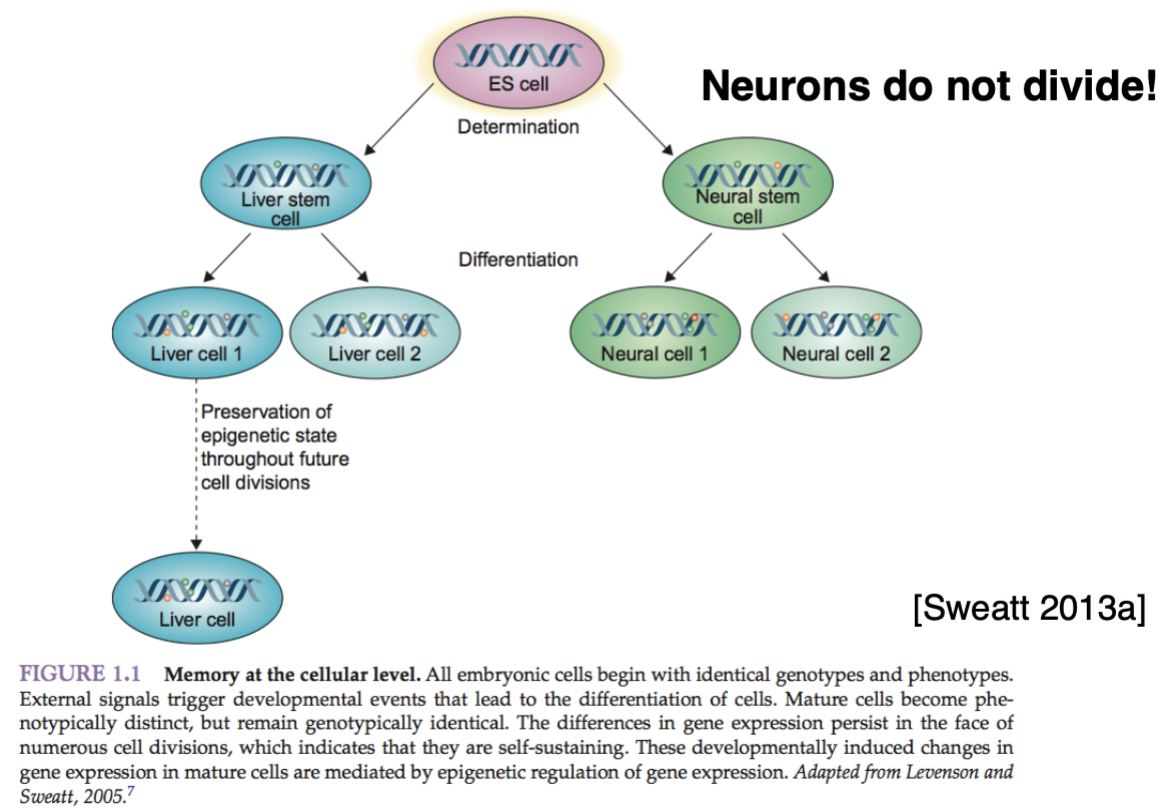
What Epigenetic mechanisms do occur in neurons?
DNA methylation
Post-translational histone modification
Chromatin Remodeling
Non-coding RNAs
Genome Organization
Epigenetics vs Neuroepigenetics:
Epigenetics → heritable alterations in gene expression without changes to the underlying DNA sequence
Nueroepigenetics → persistent alterations in gene expression without changes to the underlying DNA sequence